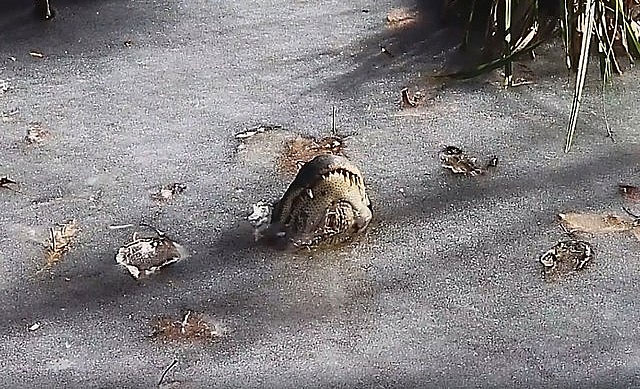Animals can revive after freezing
Alligators, frogs, turtles can freeze to wait for resurgence, water bears even work and reproduce normally after 30 years of freezing.
When there is no home for shelter, there is no warm fur to protect the body, sometimes animals must accept situations. And for them, accepting situations basically means freezing to death in the winter, then resurrecting in the spring.
When it is outdoors all winter, it is clear that we will freeze, but certainly we will not revive in the spring. These animals have found many ways to avoid death in the process. Some have anticoagulants in the blood, some take advantage of dehydration, and some protrude out of the water for long sleep.
Life on Earth is as positive as always finding a way to adapt to the harshest environments in nature. While humankind is always trying to change the world in its own right, other species prefer to solve it differently.
For example, wooden frog . Although most amphibians are sensitive to cold temperatures, wood frogs rely on them to survive over the winter. They freeze up to 70% of the body, including the brain and eyes. Their hearts, lungs and muscles all stop working, turning small animals into frog creams.
The protein in the frog body sucks most of the water out of the cell and replaces it with glucose. In a syrup-like form, glucose acts as an antifreeze to prevent cells from turning into ice. When the weather got warmer, the frog's small body thawed and the water returned to its cell, allowing them to jump as if nothing had happened.

Short snout crocodile juts out of the water, creating a temporary snorkel to sustain life.
Short snout crocodiles in North Carolina are less complicated. In the mode of survival in the midst of cold weather, when ponds and lakes began to freeze, short snout crouched out of the water, creating a temporary breathing tube to sustain life. This allows them to breathe while entering hibernation in the reptile named brumation. Processes in the body such as heart rate and slow breathing allow them to conserve energy and keep warm.
The newly hatched turtles are probably the most interesting. They can keep fluid in the body at temperatures below 0 degrees and can survive even if the tissue is frozen mostly. But why does this type of turtle need no snorkel like a short snout crocodile? That's because they rely on other places to get oxygen, that's their butt.
A cold turtle in cold water has a slower metabolic rate, requires less oxygen to produce more energy. Because their demand for oxygen is very low, they can collect water from the surrounding, they move so that pond water slides through the body's surface, absorbing oxygen through the bloodstream. And where are their blood vessels on their bodies? You can guess it is butt.
The scientific term is called respiration through the vent hole . In 1983, scientists froze a group of water bears and they could revive 30 years later. Revival specimens are not only healthy but also reproduce.
These animals can help us find ways to overcome extreme conditions. If we simulate their method, we can use the process to freeze our corpses and fly further into the universe, or freeze human organs for transplants.
- What do scientists do to revive dinosaurs?
- Why need to revive the mammoth
- What will the world be like if dinosaurs and mammoths revive?
- Tail pieces can help revitalize extinct bison 12,000 years
- Why does science have to spend tens of years just to revive mammoths?
- The reasons for extinction of animals are more difficult than we imagined
- Why are some animals still alive even if the blood freezes?
- Can still revive the dead
- Why fish can 'revive' after freezing at - 32 degrees Celsius
- Freezing waves on the surface of Canadian lakes in weather -23 degrees Celsius
- 10 great photos of permafrost
- Freezing waves in Croatia
 Animal 'suffering' after hibernation
Animal 'suffering' after hibernation Why do goats climb well?
Why do goats climb well? Scientists were surprised to see chimpanzees eating turtles
Scientists were surprised to see chimpanzees eating turtles Giant catfish died deadly due to drought in Thailand
Giant catfish died deadly due to drought in Thailand